While in movies, filming locations are often used for one specific scene or even a few seconds of cutting, for brief appearances only, the locations in TV Series often truly become the scene to the plot for more than one episode, taking spectators to another world. The four TV Series we have selected have been a fantastic promotion for Iceland over the last years, fans clamouring to find out where the picture-perfect jaw-dropping backdrop actually is.
[SPOILER ALERT] Although we spare you the most exciting scenes, the following content might include spoilers so make sure you’ve already seen the episodes mentioned, we don’t want you to get mad! :) We will update this article as the episodes are aired.
1. Game of Thrones (Seasons 2 – 7)
Earlier this year, Kit Harington and Emilia Clarke came to Iceland to shoot the Season 8 (yes, the final one!) of Game of Thrones, which has become a habit since scenes from Season 2 were shot in Iceland. From Dubrovnik in Croatia (King's Landing), Giant's Causeway and Dark Hedges in Northern Ireland, to the medieval city of Girona in Spain and the Alcazaba Fortress of Almeria, one of the reasons behind the success of HBO’s series Game of Thrones, is the choice of scenic filming locations. Iceland has quickly become one of the show’s favourite filming locations too, so much that we thought we would dedicate an article to the TV Series.
Read more for places in Iceland every fan should visit and check out the Game of Thrones Tour across the main filming locations!
🖈 ÞINGVELLIR NATIONAL PARK (North of Westeros)
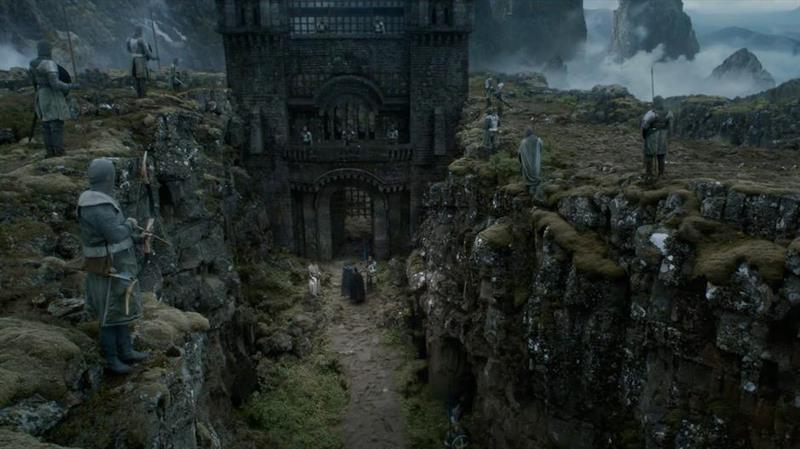
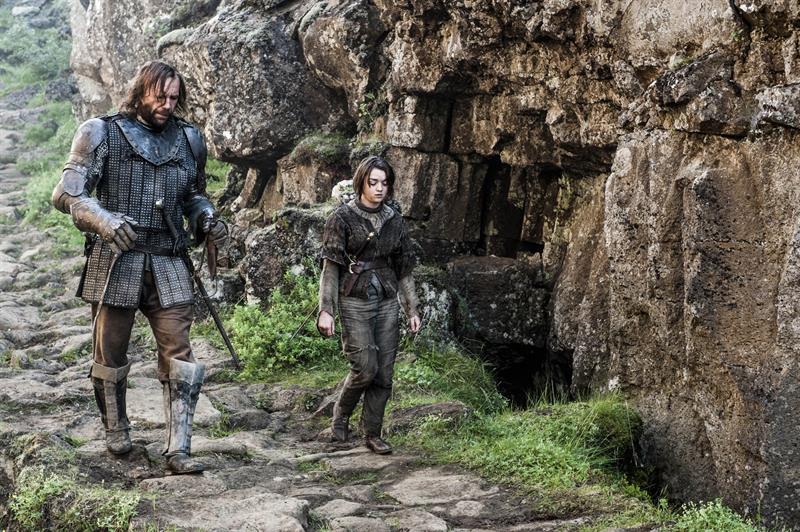
The Almannagjá Gorge, near Öxaráfoss waterfall, in Þingvellir National Park takes you into the rift between the Eurasian and North American tectonic plates, and is featured in the series as the Gates of the Moon, the narrow path to the impregnable Eyrie. It is visited by Sansa Stark and Littlefinger (Season 4 – Episode 5), and Arya Stark and the Hound (Season 4 – Episode 8) on their separate journey.

The nearby Hengill mountain is the site where Brienne of Tarth and the Hound engage in a bloody duel in Season 4 – Episode 10.
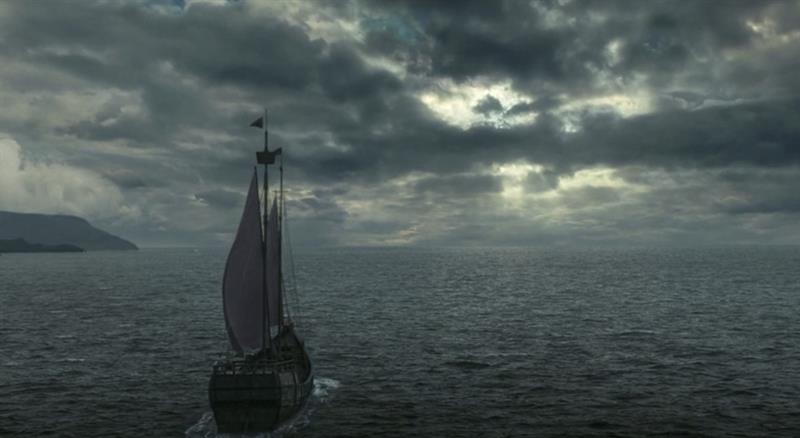
In the same episode, Lake Þingvallavatn, Iceland’s largest natural lake, was used as a base for the bay from which Arya leaves Westeros in direction of Braavos.
🖈 ÞORUFOSS WATERFALL (Meereen landscape)
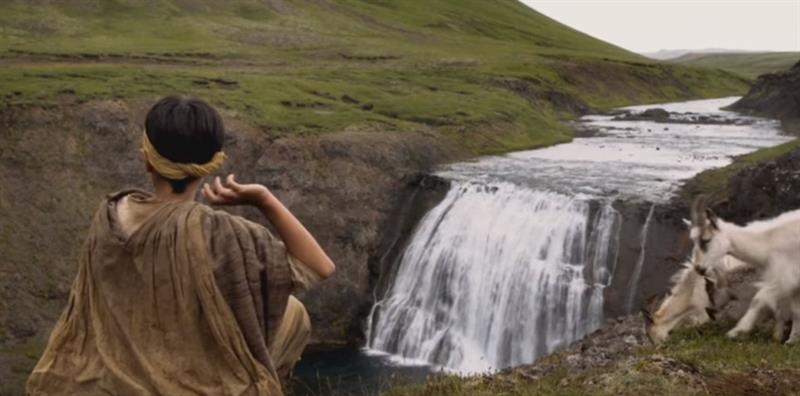
You will encounter endless breathtaking waterfalls in Iceland but if you want to spot one from Game of Thrones, then your best pick is Þórufoss. The famous Gullfoss was used as a scouting and filming location for the series but it somehow never made it to the screen. Þórufoss is an 18-meter high waterfall located East of the aforementioned Lake Þingvallavatn, and the place where Drogon, one of Daenerys’ dragons, attacks and eat a goat in Season 4 – Episode 6.
🖈 KIRKJUFELL MOUNTAIN (Arrowhead Mountain)
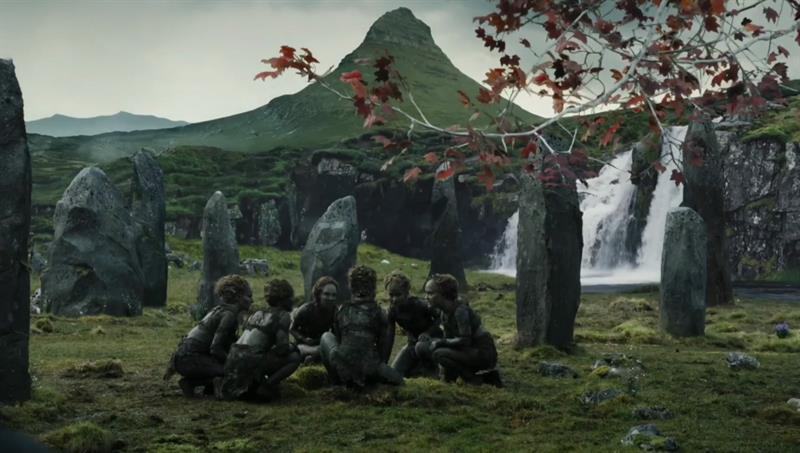
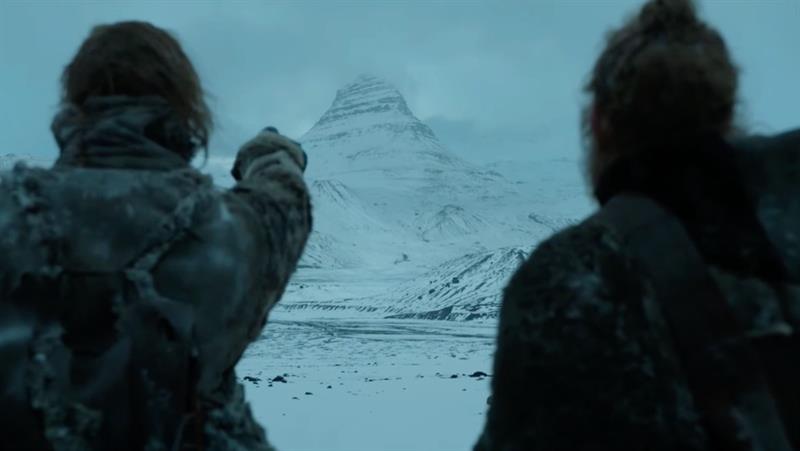
Kirkjufell being one of Iceland's most iconic and photographed places, with a palpable mystical atmosphere, no wonder it is one of Game of Thrones top Filming locations. 463 meters in height, Mount Kirkjufell lies on the North coast of Snæfellsnes Peninsula, a short distance away from many natural wonders. Kirkjufell first appears in Season 6 – Episode 5, when the Children of the Forest create the first White Walker, the Night King, to protect them. It comes back in Season 7 – Episodes 1&6, as the Arrowhead Mountain, when Jon Snow and the Suicide Squad head North of the Wall to fight the White Walkers.
🖈 DIMMUBORGIR LAVA FIELD (Wildling Army Camp)

The snow-covered lava field of Dimmuborgir in Lake Mývatn area was used as the place where Mance Rayder, King beyond the Wall, sets the main Wildling Army camp in Season 3, where many lava rock formations and arches make for the backdrop. The scenes were filmed during winter, in temperatures as low as -11°C, so for a full effect from the series, you might consider to visit in the winter months when the area is covered in snow.
🖈 HVERFJALL CRATER
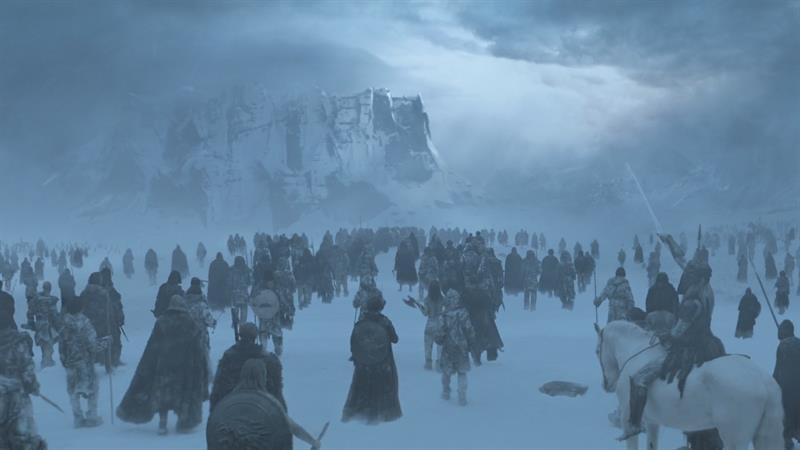
Hverfjall Crater stands in as the place where the White Walkers stomped beyond the Wall in Season 2 – Episode 10. A 30-minute hike will take you up to the rim of the crater, offering a panoramic view over Lake Mývatn area.
🖈 GRJOTAGJA HOT SPRINGS (Jon & Ygritte’s moment)
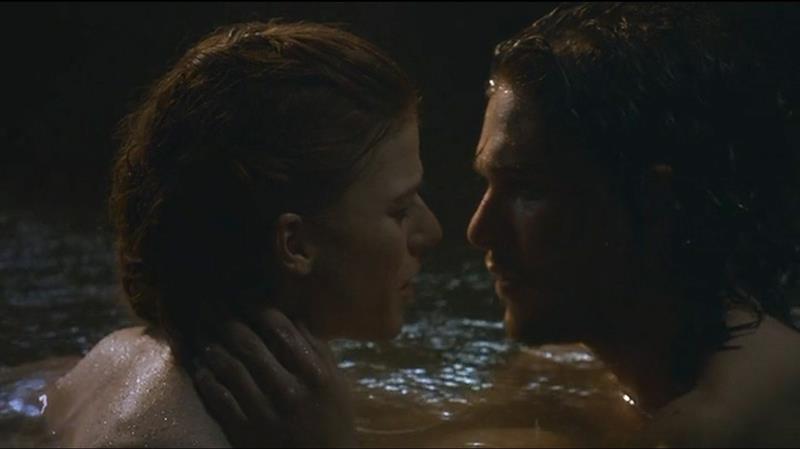
Grjótagjá cave, a small lava cave located 10 minutes North of Dimmuborgir, once was commonly used for bathing until the volcanic eruptions from 1975 to 1984 in the area caused the temperature of the water to rise to more than 50°C. Although the actors did not actually film there as the water was too hot to enter, this is the place where, in Season 3 – Episode 5, Jon Snow and Ygritte sneak in and "get to know each other better" :)
🖈 HVERARÖND SULPHUR SPRINGS (North of the Wall)
Hverir is one of Iceland’s largest geothermal fields, located at the foot of Námafjall Mountain in Lake Mývatn area, North Iceland. While the fumaroles and bubbling mud pools are not clearly seen in the series, the place was used to create the illusion of the impenetrable blizzard Samwell Tarly is wandering through at the beginning of Season 3. So if you want to see how it looks like to stand in a blinding snowstorm, go ahead, except this includes a strong smell of sulphur, which, if you didn't know, is reminiscent of rotten eggs…
🖈 STAKKHOLTSGJA CANYON (Wight Ambush)

In Season 7 – Episode 6, Jon Snow and his Suicide Squad of fighters attempt to capture a Wight to prove the existence of the White Walkers and the Army of the Dead, all in the scenery of the 100-meter deep silent Stakkholtsgjá Canyon, located near the entrance to Þórsmörk.
🖈 GIGJÖKULL GLACIER (North of the Wall)
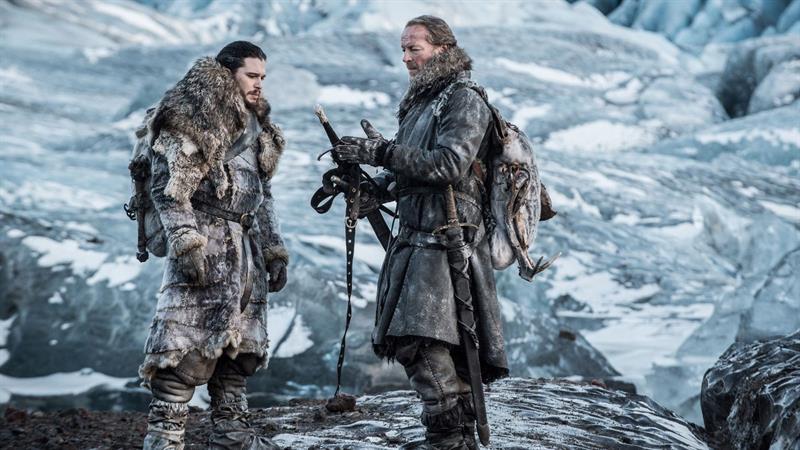
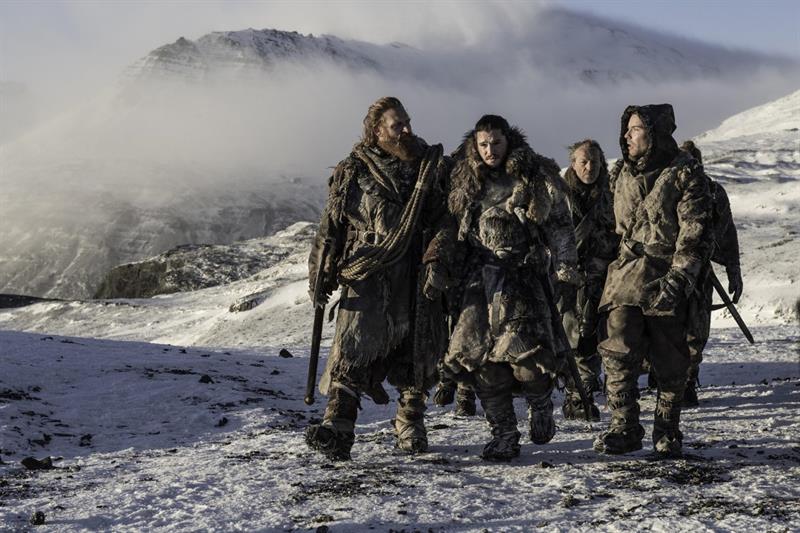
In the same episode (Season 7 – Episode 6), while on their search, the team is seen walking and talking through barren landscapes, which were filmed at Gigjökull Glacier, a glacier outlet from the famous Eyjafjallajökull ice-capped volcano.
🖈 DYRHOLAEY BLACK SAND BEACH (Eastwatch-by-the-Sea)

Dyrhólaey acts as the beach at Eastwatch-by-the-Sea, close to where the Night King was last seen, and where Jon Snow and the Night’s Watch dock their boat to begin their search for a wight, or White walker, and bring it back to King's Landing in Season 7 – Episode 5 and where they are guarding the Wall. In other scenes, you will notice that the cliff blocking off the land was made 10 times higher to represent the Wall.
🖈 MYRDALSJÖKULL GLACIER (Fist of the First Men)
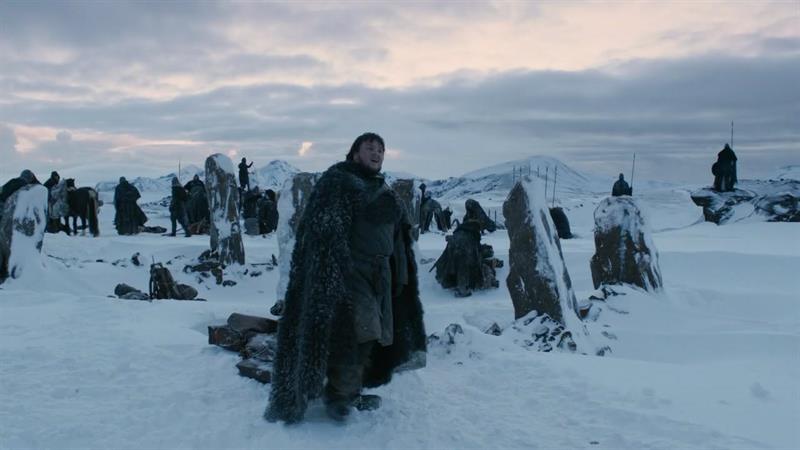

In the series, the Fist of the First Men on Westeros is only accessible by a steep climb, offering a strategic view over the surroundings. It is located many days North of the Wall, at the edge of the Haunted Forest and represented in Season 2 by Myrdalsjökull Glacier, well-known for sitting atop the threatening volcano Katla.
🖈 HÖFÐABREKKUHEIÐI (Frostfangs)
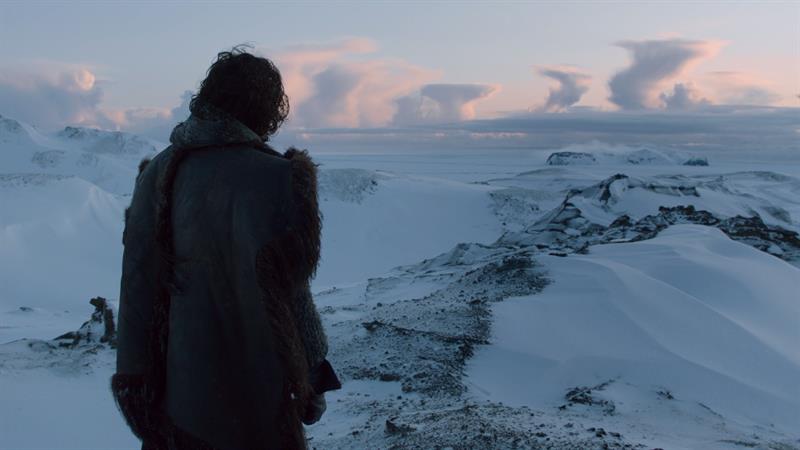
The frozen landscapes of the far North of Westeros and the Frostfang Mountains can be found near the foot of Katla volcano and Vík, in the Höfðabrekkuheiði hiking area.
🖈 VATNAJÖKULL AND SVINAFELLSJÖKULL GLACIERS (North of the Wall)
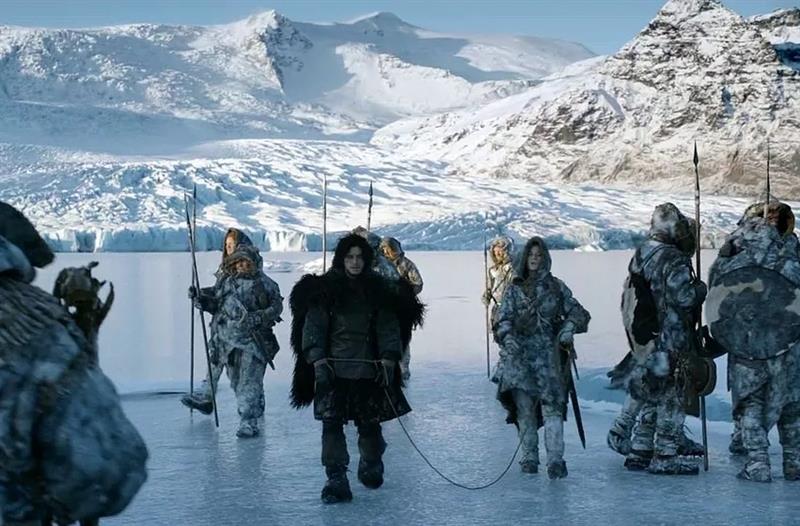
While artificial snow did the job in Season 1, producers naturally picked Iceland to film scenes beyond the Wall thereafter, with the Svínafellsjökull Glacier playing an important role in Seasons 2 and 3 with the wildlings. Recreate the footsteps of The Dark Crusaders and hop on a thrilling glacier walk on your next visit!
🖈 ÞJORSARDALUR VALLEY (South of the Wall)
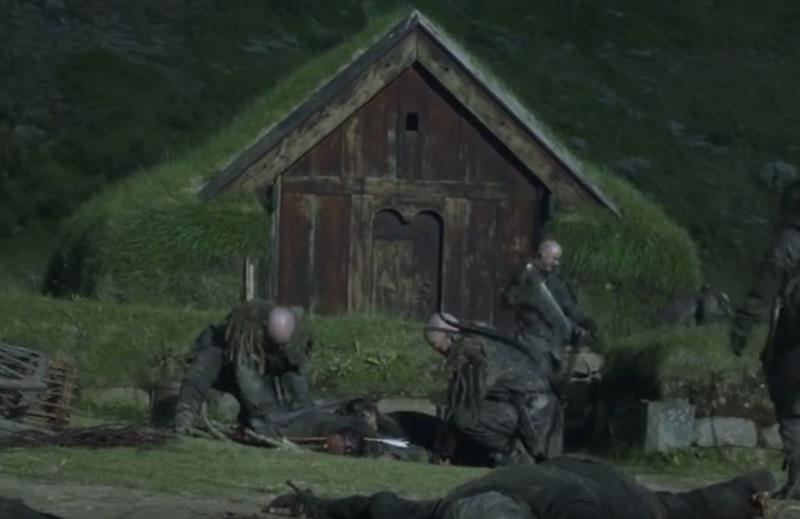
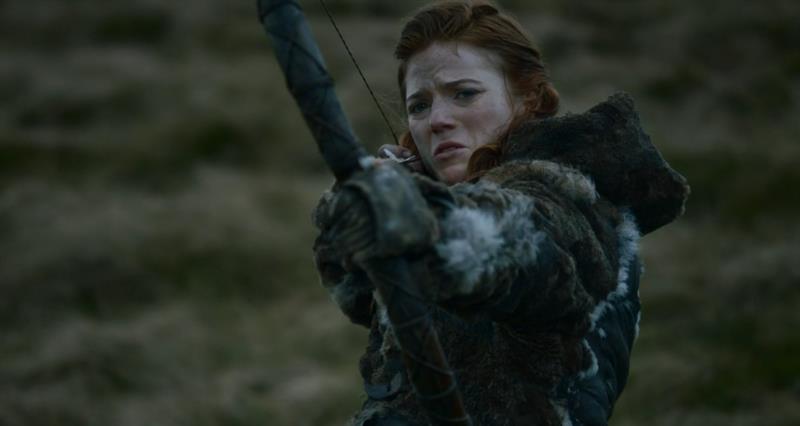
Þjórsárdalur Valley, and in particular Þjóðveldisbærinn turf houses were the location of one of the serie’s biggest massacres in Season 4 – Episode 3, during which a farming village South of the Wall is attacked by wildlings and the cannibalistic Thenns.
We could keep going on and on with other filming locations, including Fjaðrárgljúfur Canyon, Reynisfjara, and with Game of Thrones filming in Iceland for Season 8, expected for first half of 2019, one should watch for even more locations!
2. Vikings (Season 5)
We continue with Vikings, an Irish Canadian historical drama TV series created by Michael Hirst for the History channel. Flóki, a ship builder known for its eccentricity and spirituality, and one of the series legendary characters, is inspired by Flóki Vilgerðarson, the first Norseman to deliberately sail to Iceland. The Landnámabók manuscript, the Icelandic medieval Book of Settlements from the 13th Century, documents his story.
Flóki Vilgerðarson was better known as Hrafna-Flóki, Raven-Flóki, in reference to the three ravens he sent to help him navigate. The first raven flew for a while before returning while the second one flew above the boat before landing again. The third raven flew away and never returned, indicating it had found land and that Flóki should follow. The story says that when he found land, Flóki hiked to the very top of the closest mountain, where all he could see was ice. Therefore he named it Ísland, Iceland. After landing in Vatnsfjörður fjord, on the south coast of the Westfjords, Flóki spent some time in Borgarfjörður fjord in West Iceland, but then sailed back to Norway. He later returned to settle with his people in Skagafjörður fjord in North Iceland, whose valley Flókadalur is named after him.
Vikings fans will find in the show similarities with the original story of Flóki, although the scenario took some liberties with the interpretation. Although only 10 episodes of the fifth season have aired, with 10 more to come, Iceland has played a prominent role in the first half already.
🖈 DYRHOLAEY BLACK SAND BEACH
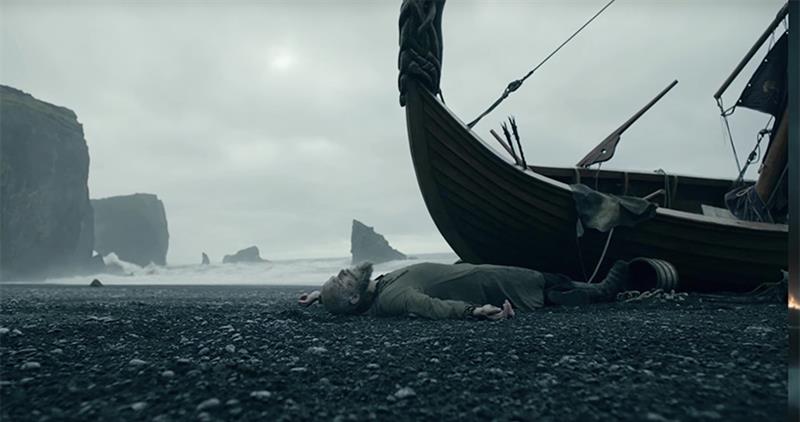
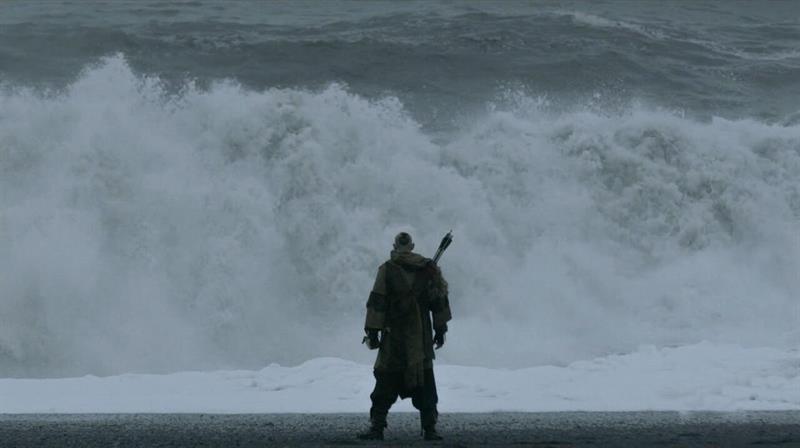
Iceland first appears when after an exhausting solo journey drifting from a raging storm, Flóki finds unknown land. He first lands on the shore of Dyrhólaey Black Sand Beach with the Reynisdrangar Seastacks in the distance (Season 5 – Episode 1). The picturesque landscapes of Dyrhólaey then regularly appear, as the entry point to the land.
🖈 SKOGAFOSS WATERFALL

On his exploration of this new land, Flóki encounters the mighty Skógafoss Waterfall (Season 5 – Episode 2), that convinces him that the land he found is Asgard, the land of the gods, meant for him and his people. Soon, Flóki decides not to stay on this island by his own and to bring a group of believers to his special place, to share the privilege of being near the gods.
🖈 KRÝSUVIK GEOTHERMAL AREA

Flóki finds himself in the middle of the fissure on the Mid-Atlantic ridge, in Krýsuvík geothermal area, when healing his wounds with the help of the Gods (Season 5 – Episode 3). Krýsuvík is located only 40 minutes from Reykjavík and presents interesting geological features.
🖈 KVERNUFOSS WATERFALL
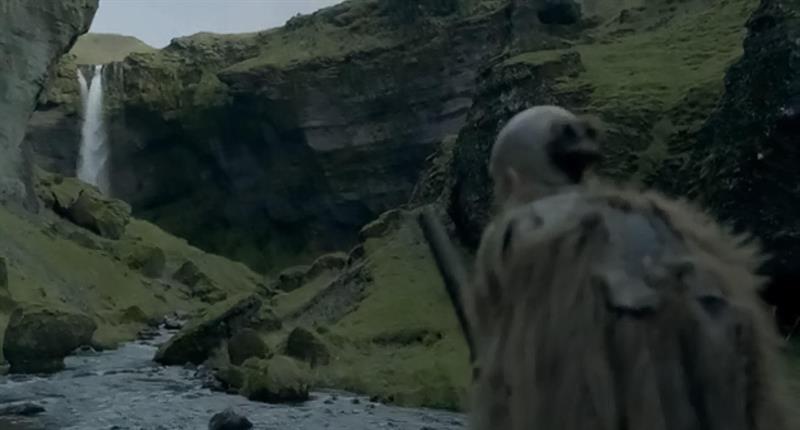
In the euphoria following his discovery, Flóki tends to oversells Iceland quite a lot, and his experience of Kvernufoss Waterfall (Season 5 – Episode 3) and what he sees in it convinces him stronger that he set foot on Asgard realm. Kvernufoss is the hidden neighbour of the popular Skógafoss Waterfall, in South Iceland.
🖈 INGOLFSHÖFÐI CAPE
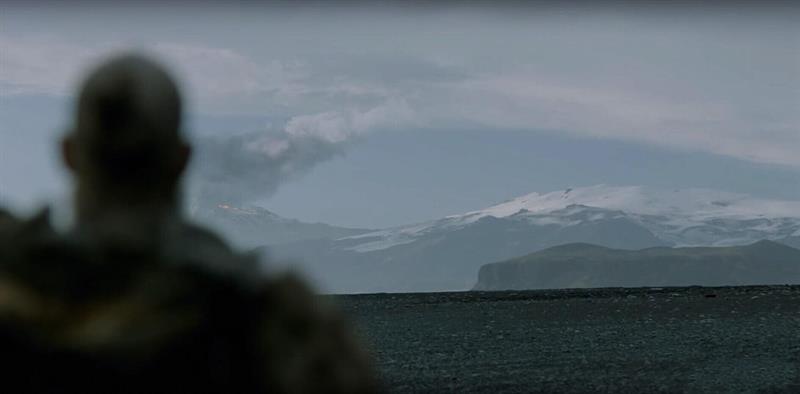
Flóki finds himself in front of the 76m-high Ingólfshöfði promontory, rising from the flat lands with Hvannadalshnjúkur Mountain, part of the Öræfajökull Glacier in the background, before he sets sails in the direction of Kattegat to get his people (Season 5 – Episode 4).
🖈 DETTIFOSS WATERFALL

When Flóki returns to Iceland with people, we viewers are treated with a glorious aerial filming of Dettifoss Waterfall, in North Iceland, the most powerful waterfall in Europe (Season 5 – Episode 6). Flóki and his people are now facing the challenges of making a settlement out of this hostile land.
Count on the special effects to spice up the show, featuring disguised geothermal pools and a tireless on-going geyser on the settlement, as well as volcanoes erupting. We look forward to the second half of Season 5 this November!
3. Black Mirror (“Crocodile”)
🖈 LAKE KLEIFARVATN, LAKE GRÆNAVATN, BAULA, REYKJAVIK




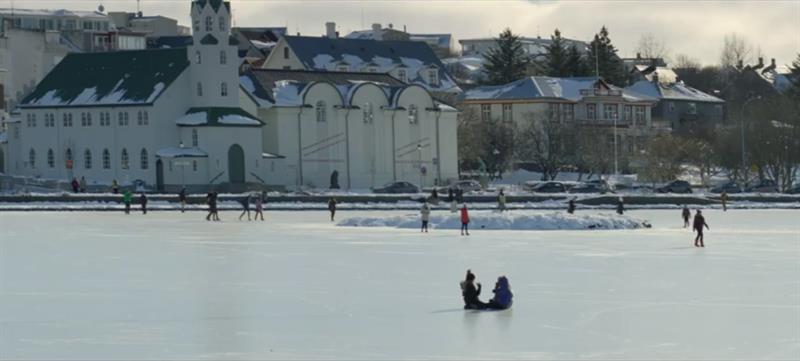
Black Mirror is a British science fiction anthology TV series created by Charlie Brooker and released on Netflix. Episodes are standalone but have in common to cast a critical eye on modern society and its excesses. One of the TV Series episode have caught the attention of fans for the spectacular snowy backdrop and staggering aesthetic… You guessed? Iceland’s wintry landscapes evoke the feeling of isolation, roughness, gathering all the ingredients for an immersive Nordic Noir mystery.
In Episode 3 “Crocodile”, protagonist Mia Nolan, an architect with a successful career and family life risks it all to keep her burdensome past hidden. We won’t say more about the plot to avoid spoilers, but the gruesome story was filmed at various locations in Iceland. The opening scenes were filmed at Lake Kleifarvatn on the Reykjanes Peninsula while the scenes at the abandoned barn took place at the nearby small Lake Grænavatn. The drive to Mia’s house along a Geothermal Power Station pumping out steam into the air, presents a striking contrast of hot versus cold. Mia’s home large windows overlook the majestic 934-meter tall Baula volcanic mountain near Bifröst and the craters of Grábrók. In the episode, Reykjavík City Hall and its large 3D map of Iceland, stands in for the reception of Hotel Medina Plaza, offering a unique view over Reykjavík’s frozen City Pond Tjörnin, with people walking on it. Mia is also seen performing a speech to the audience about environmental challenges at the Harpa Concert Hall, Reykjavík’s architectural masterpiece.
In February 2017, when the crew was filming, Reykjavík experienced a record snowfall of 51cm over a single night, bringing road traffic to a standstill for a few days, and forcing the crew to stop filming. "It’s very humbling because it’s a constant reminder of how powerful nature is. It adds energy. The world is right in front of you, and you have to deal with it.” told director John Hillcoat.
4. Trapped (Seasons 1 - 2)
🖈 SEYÐISFJÖRÐUR, SIGLUFJÖRÐUR, REYKJAVIK
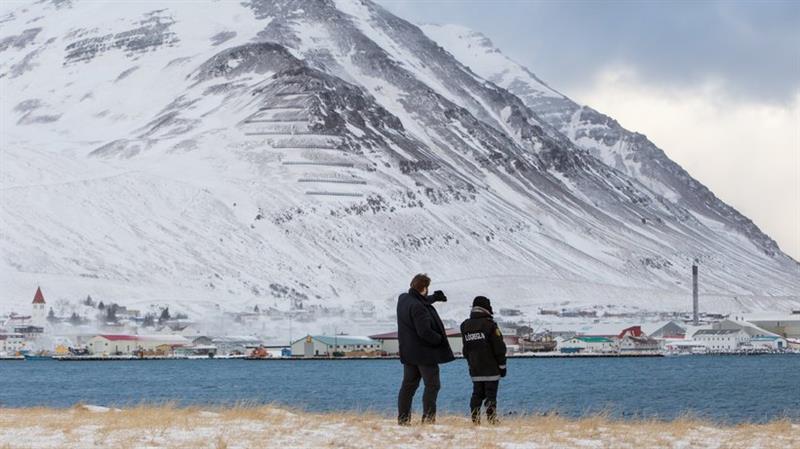
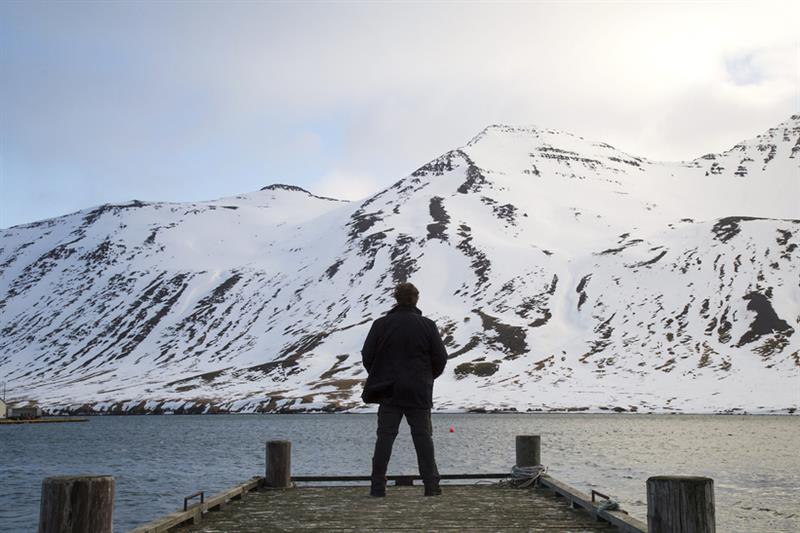
Ófærð, Trapped, is an Icelandic mystery TV series created by Baltasar Kormákur and produced by RVK Studios. According to the BBC, Trapped is the most popular TV shows to come out of Iceland, with more than 10 million viewers for Season 1 (2016). The TV series was shown on TV in Scandinavian countries, UK, France and Germany, as well as released on Netflix. Regarding Icelandic viewers… "usage of water in Iceland dropped by half during the screening of the show, so basically no one was going to the toilet." muses Kormákur.
So what is Trapped all about? The crime drama follows police officer Andri Ólafsson and his police unit as they try to solve a murder that occurred in a remote town, soon blocked by a snowstorm. All 10 episodes were filmed in Iceland, the main filming location being the fishing village of Siglufjörður, in North Iceland, whose hotel and mountains play a prominent role in the show. The scenes featuring the Norræna ferry were shot in Seyðisfjörður, East Iceland, while the pool party scene occurred in the old swimming pool of Hafnarfjörður Reykjavík suburb. The series was filmed in the middle of dark winter, the cold landscapes truly adding to the bleak and eerie atmosphere of the plot itself. Interwoven in the story are the criminal case and the characters’ personal woes, with interesting breaks in the action and slow narrative pace, creating suspense for what comes next.
Trapped is set to return in Fall 2018 with the same characters and the BBC has already listed it in the top TV shows to watch out for in 2018. The crew has been filming in Siglufjörður town and the surrounding countryside as well as Reykjavík, including Austurvöllur square in front of the house of parliament. Other filming locations are Reykjanes peninsula and the Central Highlands. To say we are excited is an understatement!
If you liked this article, we recommend you check out our Top 12 Movies Shot in Iceland!